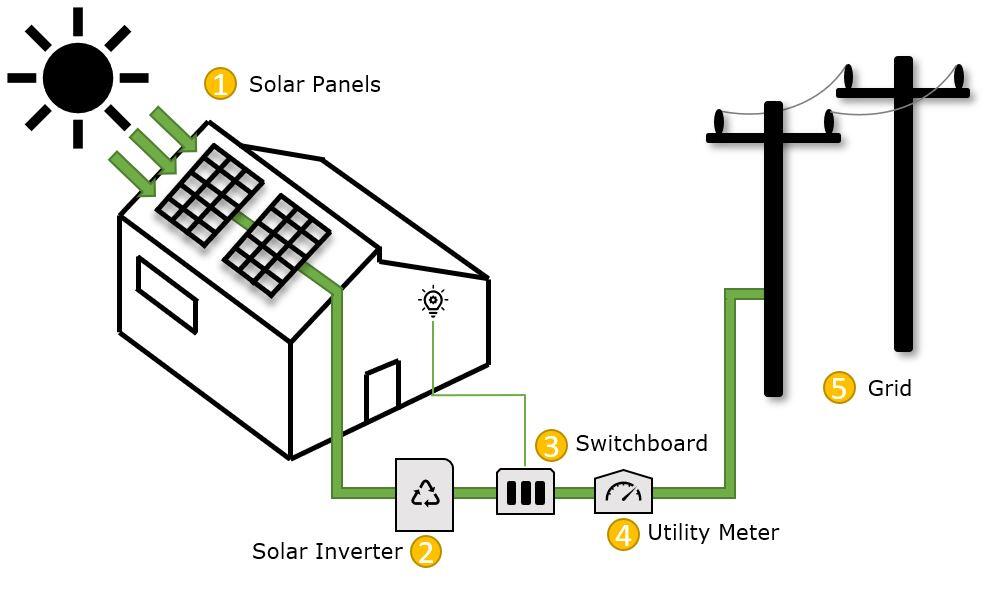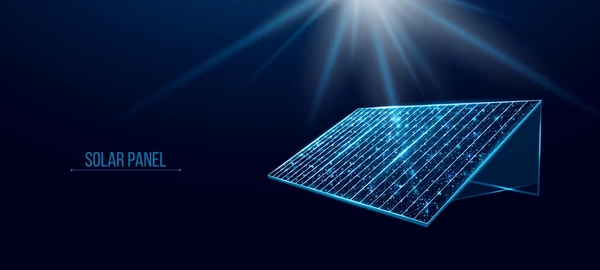Solar energy, one of the most efficient and sustainable renewable power sources, has grown in popularity. More homeowners and businesses are using solar panels as a renewable energy source as climate change concerns grow and solar technology becomes cheaper. But how do solar panels work? Understanding solar energy science and technology can help people and organizations choose solar power. This comprehensive guide covers solar energy principles, solar panel system components, and efficiency and effectiveness factors.
The Science Behind Solar Energy
Solar panels convert sunlight into electricity using the photovoltaic (PV) effect. Light particles called photons are emitted by the sun. Photons excite electrons in silicon semiconductors on a solar panel’s surface, creating an electric current.
Inverters convert DC electricity into AC for use in homes and businesses. The efficiency of this conversion depends on solar cell quality, sunlight intensity, and panel angle.
Solar Energy Basics
Solar energy from the sun can heat, cool, and light homes and businesses. Photons from the sun agitate electrons in photovoltaic material, creating a flow of energy that can be converted and used for anything that needs electricity.
Understanding How Solar Panels Work
Solar panels convert sunlight into energy, which is key to understanding them. These panels use photovoltaics to convert sunlight into energy during the day.
Silicon cells, which activate in sunlight, make up solar panels. Sunlight generates free electrons in these cells, starting a circuit. Solar panels work on this principle.
Our comprehensive guide on how solar panels are made covers their manufacturing and functionality.
To maximize solar panel performance for your needs, several factors determine the number of panels needed for your installation.

Step-by-Step Quick Guide: How Solar Panels Work
Sunlight Activation
Solar panels are strategically positioned on rooftops or open spaces in order to receive the maximum amount of sunlight possible where they are expected to be. These panels are made up of photovoltaic cells, also known as PV cells, which are responsible for absorbing sunlight and starting the process of energy conversion.
The Photovoltaic Effect
PV cells, which are the fundamental component of solar panels, are made up of semiconductor materials, with silicon being the most prominent component. As a result of the interaction between sunlight and these cells, electrons are excited, which causes them to move. An electric charge is produced as a result of this movement, which ultimately results in the formation of an electrical current.
Generation of Direct Current (DC) Electricity
As electrons move within a semiconductor, they generate DC electricity. As DC electricity flows in one direction, it cannot meet the power needs of most homes and businesses.
Conversion to Alternating Current (AC)
A solar inverter converts DC electricity into AC for use. Residential and commercial appliances and lighting systems run on AC electricity.
Distribution to the Home
After DC electricity is converted to AC, it goes to the electrical panel, or breaker box. Electricity flows seamlessly to devices, lights, and appliances throughout the home from here.
Utility Meter and Grid Connection
Through a utility meter, excess solar power is sent back to the grid. This meter tracks electricity supplied to the grid, giving homeowners net metering credits from their utility company.
Optional Solar Battery Storage
Some solar panel systems use batteries for energy efficiency. They can store excess daytime electricity for later use, especially at night or on overcast days when sunlight is scarce.
Monitoring and Maintenance
Well-maintained solar power systems perform well and last longer. Monitoring tools in many solar panel systems let homeowners track energy production and efficiency. Solar panels should be cleaned and connections checked regularly to maintain efficiency and lifespan.
This complex but effective process harnesses solar energy to reduce electricity bills, reduce reliance on traditional energy sources, and promote environmental sustainability.
Solar Inverter Transforms DC into AC Electricity
Solar panels send DC electricity to a Solar Inverter via a cable. This inverter is usually near the switchboard. The solar inverter converts DC electricity from the panels into AC electricity, which most home and business appliances use.
Inverters should match the size of your solar panel array. The market offers many inverter brands and types to fit specific solar array dimensions.
After being converted to AC electricity, it connects to the switchboard for home use. The system prioritizes cost-effective solar energy in grid-connected homes. Additional power needs are seamlessly drawn from the grid.
The solar system’s excess energy is ‘exported’ back to the grid, benefiting the network.
These can connect to the switchboard or a ‘battery-compatible’ hybrid inverter for solar-powered homes. The batteries section has more information on solar batteries and integration.
Utility meter records
A bi-direction meter must be installed by the responsible retailer after solar installation.
All power drawn to the house and solar energy exported to the grid can be recorded by the meter.
Changing this meter usually costs the household a little. A “feed-in tariff” can be earned from exported electricity to the grid.
Grid rules define system permissions
The company that owns and operates the grid (poles and wires) in your immediate vicinity is known as the Distributed Network Service Provider, or DNSP for short.
A portion of your energy costs are paid to the DNSP as a contribution to the costs of maintaining and operating the network. However, for residential customers, this is not visible because it is bundled into the bills that they receive from their electricity retailer.
Regarding the amount of solar panels that can be installed and whether or not you are allowed to send energy back to the grid, the rules that govern each DNSP are slightly different from one another.
As a general guide:
- Most DNSPs allow 5kW (inverter-size) solar exports with an automated approval process.
- A network protection device is needed for commercial projects over 30kW.
- Commercial projects over 100kW require a more detailed approval process, including an engineering study and design changes to approve the system.
Solar Batteries
A simple solar battery stores excess solar energy and uses it in the evening or night when the solar panels aren’t generating power.
To decide if battery storage is worth it, consider the lost feed-in tariff, battery lifetime, and installation cost.
A Virtual Power Plant (VPP) scheme allows a fleet of solar batteries to stabilise the grid and profit from wholesale price spikes.
Solar batteries can be connected to the switchboard or solar inverter (DC). When connected to a hybrid solar inverter, solar panels’ DC electricity charges batteries directly.
After the battery discharges, the hybrid solar inverter converts energy to AC. An “AC Coupled” battery is connected to the switchboard and receives AC power. Tesla Powerwall 2 batteries have an internal inverter that converts AC power to DC for storage.
Despite the inefficiency of inverting power multiple times, companies choose this design because it works with almost any solar inverter and can be used without solar panels.
Conclusion: Embracing the Power of Solar Energy with True Solar Pakistan
Solar energy is transforming the way homeowners and businesses generate electricity, offering a clean, cost-effective, and sustainable alternative to traditional energy sources. By harnessing the power of the sun through photovoltaic technology, solar panels efficiently convert sunlight into usable electricity, reducing dependency on fossil fuels and lowering energy costs.
At True Solar Pakistan, we are committed to making solar power accessible and efficient for everyone. From high-quality solar panels and inverters to advanced battery storage solutions, we provide end-to-end solar energy systems tailored to meet your energy needs. Whether you’re looking to reduce your electricity bills, achieve energy independence, or contribute to a greener planet, our team of experts is here to guide you every step of the way.
With the growing advancements in solar technology, there has never been a better time to switch to solar. By investing in a solar energy system, you not only secure a sustainable energy source but also contribute to a cleaner, more energy-efficient future. Join the solar revolution with True Solar Pakistan and take a step towards a brighter, greener tomorrow!

